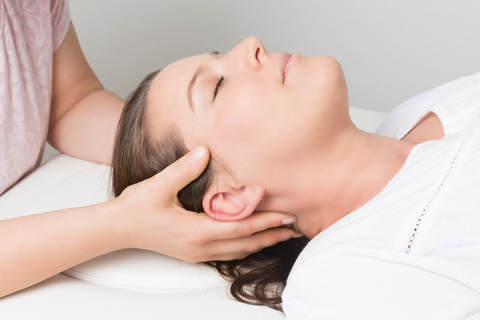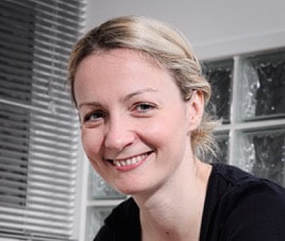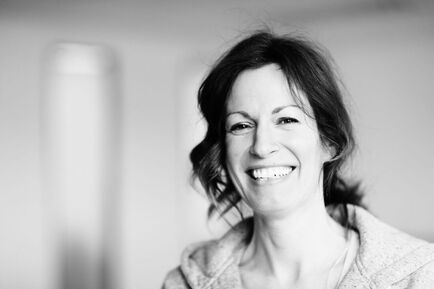Craniosacral Therapy
We are fortunate to have highly trained Craniosacral therapists working from the Healthy Life Centre. Susana Castilla trained at the Upledger Institute, Emma Veitch is trained in Biodynamic Craniosacral Therapy (BSCT) and Nicki King combines Craniosacral with Somatic Experiencing.
What is Craniosacral Therapy?
Craniosacral therapy is a non-aggressive gentle technique, unlike some manipulative therapies in which the body and its defensive mechanisms may often be triggered, causing muscles to tighten and pain reflexes to be initiated as the body defends itself against the therapist’s hand. In contrast, Craniosacral therapy allows the tissues to unwind and relax .
It is a treatment suitable for all ages including babies, children and the elderly.
What is the Craniosacral System?
The Craniosacral System was developed from discoveries made within the field of osteopathic medicine at the turn of the 20th century by Dr. Sutherland. Further investigations lead to Dr. Upledger (an osteopathic physician and researcher at Michigan University) to describe the physiological body system in terms of the membranes and cerebrospinal fluid that surround and protect the brain and spinal cord, as well as the attached bones (cranium, face, vertebral column and pelvis/ sacrum). He discovered that an imbalance or dysfunction in this system can cause sensory, motor and/or neurological disabilities.
What a Craniosacral Therapist Does
Like the movement of the cardiovascular system and the respiratory system, the craniosacral system has a rhythm that
can be felt throughout the body. By placing the hand using a light touch over the fully clothed body of the patient, a skilled
practitioner can monitor this rhythm at key body points to pinpoint the source of any obstruction or stress. Once a source has been determined, the practitioner can assist the natural movement of the cerebrospinal fluid and related soft tissues to help the body self-correct and release any blockages or tension. The brain waves descend to Beta, relaxing the body and mind like if you were asleep.
Helping the Body to Heal Itself
By using Craniosacral therapy, the body’s own healing mechanisms act in the same way as when we sleep during the night. The light touch the craniosacral therapist uses does not activate resistance in the body and therefore simply facilitates the body in its own healing.
Contraindications
• Acute brain hemorrhage or stroke
• Recent spinal tap or puncture in the craniosacral system
• Recent fracture of skull bones, vertebral column or ribs
• Other conditions where a variation and or slight increase in
intracranial pressure would cause instability
• If you have any concerns about CST you should consult your
physician prior to receiving a session
Craniosacral therapy is a non-aggressive gentle technique, unlike some manipulative therapies in which the body and its defensive mechanisms may often be triggered, causing muscles to tighten and pain reflexes to be initiated as the body defends itself against the therapist’s hand. In contrast, Craniosacral therapy allows the tissues to unwind and relax .
It is a treatment suitable for all ages including babies, children and the elderly.
What is the Craniosacral System?
The Craniosacral System was developed from discoveries made within the field of osteopathic medicine at the turn of the 20th century by Dr. Sutherland. Further investigations lead to Dr. Upledger (an osteopathic physician and researcher at Michigan University) to describe the physiological body system in terms of the membranes and cerebrospinal fluid that surround and protect the brain and spinal cord, as well as the attached bones (cranium, face, vertebral column and pelvis/ sacrum). He discovered that an imbalance or dysfunction in this system can cause sensory, motor and/or neurological disabilities.
What a Craniosacral Therapist Does
Like the movement of the cardiovascular system and the respiratory system, the craniosacral system has a rhythm that
can be felt throughout the body. By placing the hand using a light touch over the fully clothed body of the patient, a skilled
practitioner can monitor this rhythm at key body points to pinpoint the source of any obstruction or stress. Once a source has been determined, the practitioner can assist the natural movement of the cerebrospinal fluid and related soft tissues to help the body self-correct and release any blockages or tension. The brain waves descend to Beta, relaxing the body and mind like if you were asleep.
Helping the Body to Heal Itself
By using Craniosacral therapy, the body’s own healing mechanisms act in the same way as when we sleep during the night. The light touch the craniosacral therapist uses does not activate resistance in the body and therefore simply facilitates the body in its own healing.
Contraindications
• Acute brain hemorrhage or stroke
• Recent spinal tap or puncture in the craniosacral system
• Recent fracture of skull bones, vertebral column or ribs
• Other conditions where a variation and or slight increase in
intracranial pressure would cause instability
• If you have any concerns about CST you should consult your
physician prior to receiving a session
Biodynamic Craniosacral Therapy (BCST) is a gentle way of working with the body using light touch. It supports the body to prioritise its needs and health. We all hold the stories and patterns of our lives in our bodies and these are reflected by how we hold and experience our own health. These patterns and experiences make us who we are and sometimes they lead to mental, emotional or physical issues. BCST helps the body to identify and address symptoms or patterns that may be causing us issues and supports healing, alignment and awareness around these. It promotes a sense of deep relaxation and stillness. It can be particularly beneficial for people with chronic pain issues, anxiety/depression and conditions where more direct therapies can be invasive or activating.
|
Emma Veitch holds a BCST diploma with the School of Body Intelligence and is a registered practitioner with the Craniosacral Therapy Association. Emma’s wider training and accreditations are in Myofascial Release, Holistic Therapeutic Massage and Thai Massage. Emma is a regional representative for the Massage Training Institute in Scotland. Emma practices both Biodynamic Craniosacral Therapy and Myofascial Release/Massage at the Centre.
Prices 1 hour session £50 90 minutes session £75 To book contact: emma@emmajaneveitch.co.uk |
|
Nicki Young is currently in her advanced year of the Somatic Experiencing (SE) diploma with SOSI Internationale and is a member of SEAUK. For the past 3 years Nicki has been practising Craniosacral, which she studied with Body Intelligence, and in combining SE and Craniosacral as a bodywork approach to healing trauma works with PTSD, shock, chronic pain and other stress disorders. In 2009, she started as a bodyworker in Remedial/Sports Massage Therapy and Reflexology and is accredited through SMTO (Scottish Massage Therapist Organisation).
Nicki charges: 1 hour Cranio £50 1 hour Combination Cranio/SE £55 |




